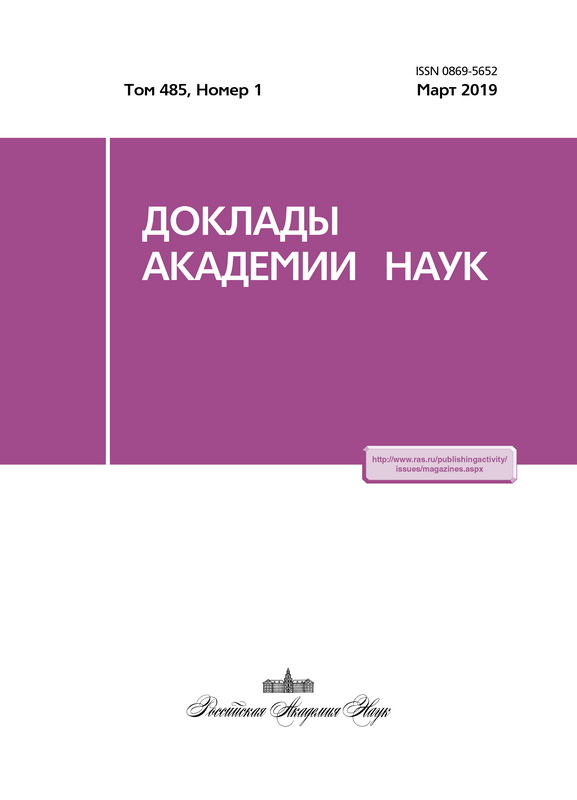Relationship of lightning flashes frequency with statistical characteristics of convective activity in the atmopshere
- Authors: Eliseev A.V.1,2,3, Ploskov A.N.1, Chernokulsky А.V.2, Mokhov I.I.1,2,4
-
Affiliations:
- Lomonosov Moscow State University
- Obukhov Institute of Atmospheric Physics of the Russian Academy of Sciences
- Kazan Federal University
- Moscow Institute of Physics and Technology
- Issue: Vol 485, No 1 (2019)
- Pages: 76-82
- Section: Geophysics
- URL: https://journals.eco-vector.com/0869-5652/article/view/12910
- DOI: https://doi.org/10.31857/S0869-5652485176-82
- ID: 12910
Cite item
Abstract
A modification of the commonly used Price-Rind scheme for lightning flashes frequency (LFF), which can be used for calculations with large spatial and time steps, is developed. With such steps, the exponent in the relationship of LFF on convective cloud heights appears to be smaller by a factor of two over land and by one fourth over ocean in comparison to that in the original Price-Rind scheme. The modified version is implemented into the IAP RAS climate model (CM). The results of the lightning flash frequency simulations with the modified scheme agree better with the satellite data than those with the original one. In the IAP RAS CM, global warming (cooling) leads to LFF increase (decrease) in all seasons. The sensitivity of lightning flashes frequency to the surface air temperature change at the global level is estimated equal to 10%/K.
About the authors
A. V. Eliseev
Lomonosov Moscow State University; Obukhov Institute of Atmospheric Physics of the Russian Academy of Sciences; Kazan Federal University
Author for correspondence.
Email: eliseev@ifaran.ru
Russian Federation, 1, Leninskie gory, Moscow, 119991; 3, Pizevsky, Moscow, 119017; 18, Kremliovskaya street, Kazan, 420008
A. N. Ploskov
Lomonosov Moscow State University
Email: eliseev@ifaran.ru
Russian Federation, 1, Leninskie gory, Moscow, 119991
А. V. Chernokulsky
Obukhov Institute of Atmospheric Physics of the Russian Academy of Sciences
Email: eliseev@ifaran.ru
Russian Federation, 3, Pizevsky, Moscow, 119017
I. I. Mokhov
Lomonosov Moscow State University; Obukhov Institute of Atmospheric Physics of the Russian Academy of Sciences; Moscow Institute of Physics and Technology
Email: eliseev@ifaran.ru
Academician of the RAS
Russian Federation, 1, Leninskie gory, Moscow, 119991; 3, Pizevsky, Moscow, 119017; 9, Institutskij, Dolgoprudny, Moscow region, 141701References
- Rakov V. A., Uman M. A. Lightning: Physics and Effects. Cambridge: Cambridge Univ. Press, 2003. 687 p.
- Price C., Rind D. // J. Geophys. Res.: Atmospheres. 1992. V. 97. № D9. P. 9919-9933.
- Mareev E. A., Volodin E. M. // Geophys. Res. Lett. 2014. V. 41. № 24. P. 9009-9016.
- Кгаизе A., FosterS, WilkenskjeldS, et al. // J. Geophys. Res.: Biogeosciences. 2014. V. 119. № 3. Р. 312-322.
- Clark S.К., Ward D.S., Mahowald N.M. // Geophys. Res. Lett. 2017. V. 44. № 6. P. 2893-2901.
- Claussen M., Mysak L.A., WeaverA.J., etal. // Clim. Dyn. 2002. V. 18. № 7. P. 579-586.
- мохов и. и., Елисеев А. В. // ДАН. 2012. Т. 443. № 6. C. 732-736.
- мазин и. П., Хргиан А. Х. Облака и облачная атмосфера. Л.: Гидрометиздат, 1989. 647 c.
- Брылев Г. Б., Гашина C. Б., низдойминога Г. Л. Радиолокационные характеристики облаков и осадков. Л.: Гидрометеоиздат, 1986. 234 с.
- Eliseev A. V., Coumou D., Chernokulsky A. V., et al. // Geosci. Model Develop. 2013. V. 6. № 5. P. 1745-1765.
- мохов и. и. Диагностика структуры климатической системы. СПб.: Гидрометоиздат, 1993. 271 с.
- Cecil D. J., Buechler D. E., Blakeslee R. J. // Atmos. Res. 2014. V. 135/136. P. 404-414.
- Sun B., Groisman P.Ya., Mokhov I. I. // J. Clim. 2001. V. 14. № 8. Р. 1864-1880.
- Мохов И. И., Акперов М. А. // Изв. РАН. Физика атмосферы и океана. 2006. Т. 42. № 4. С. 467–475.
- Norris J. R. // J. Geophys. Res.: Atmospheres. 2005. V.
Supplementary files







